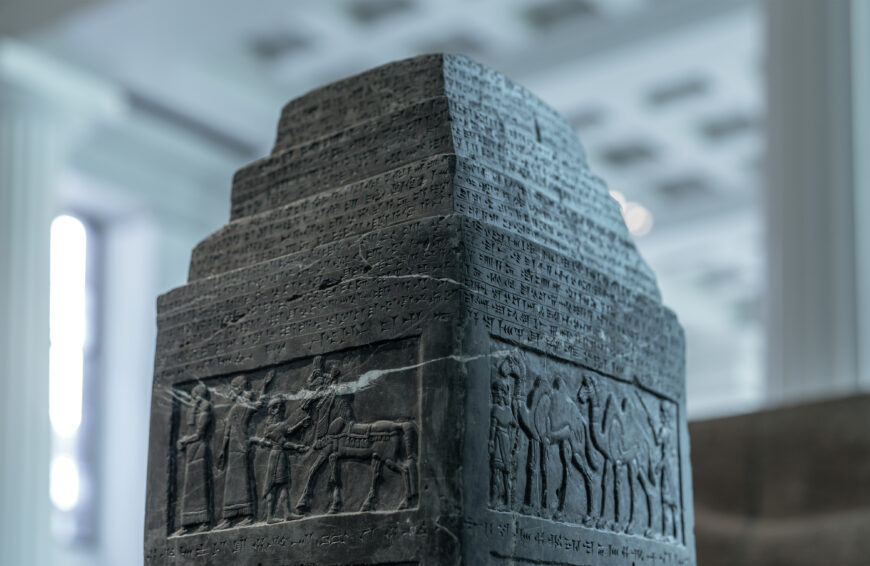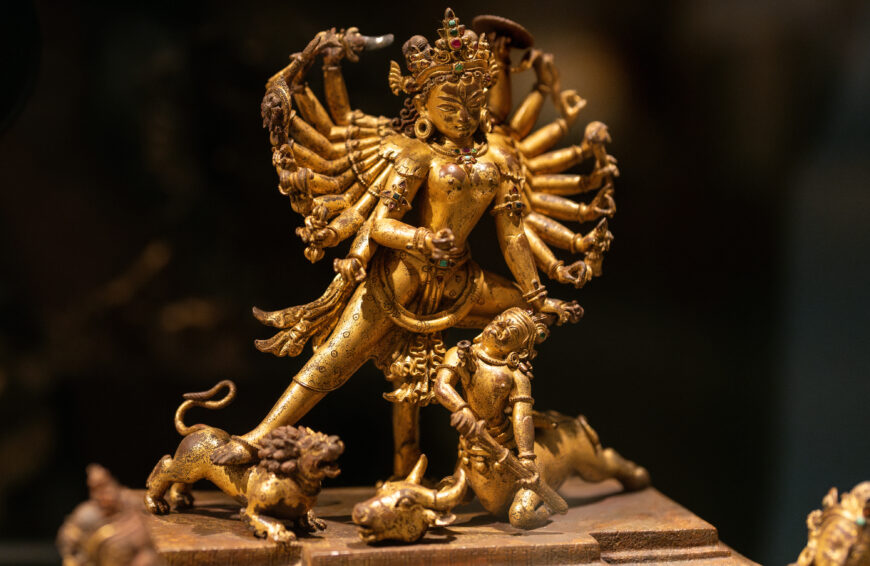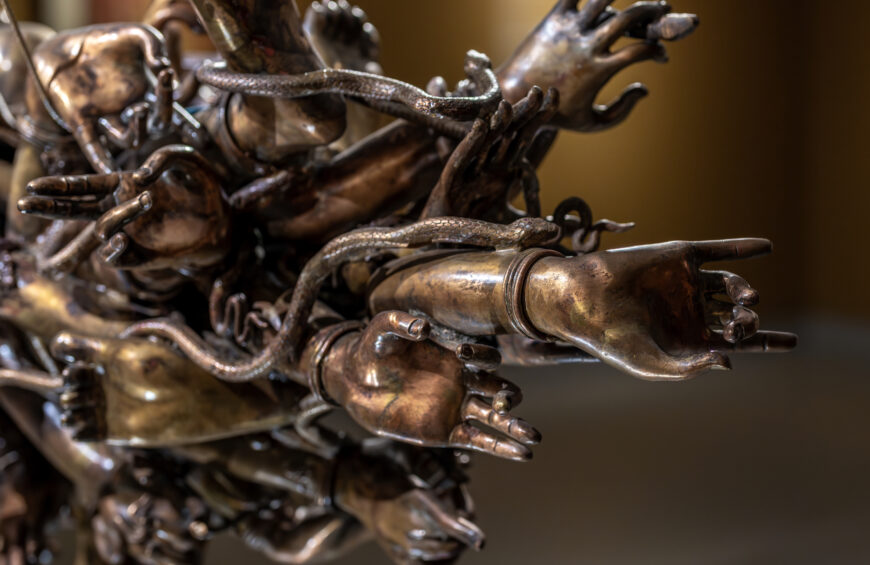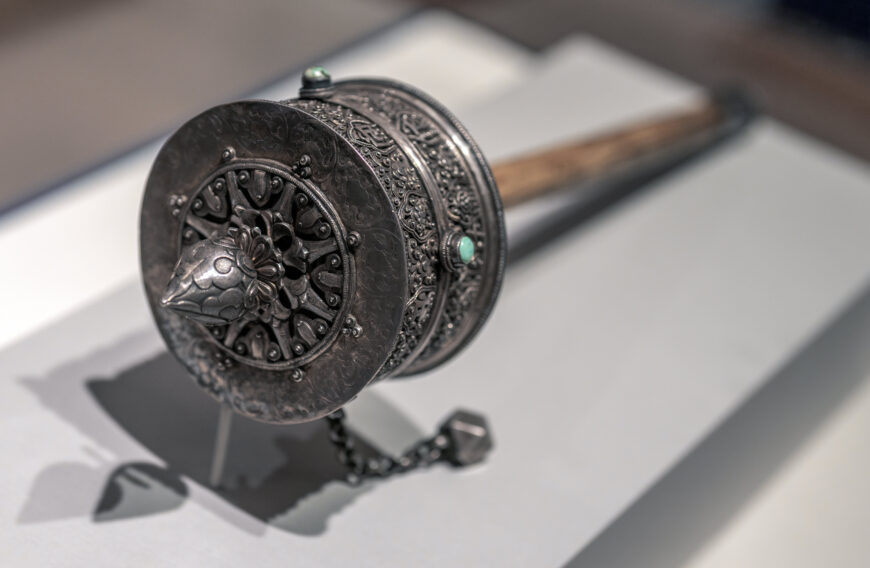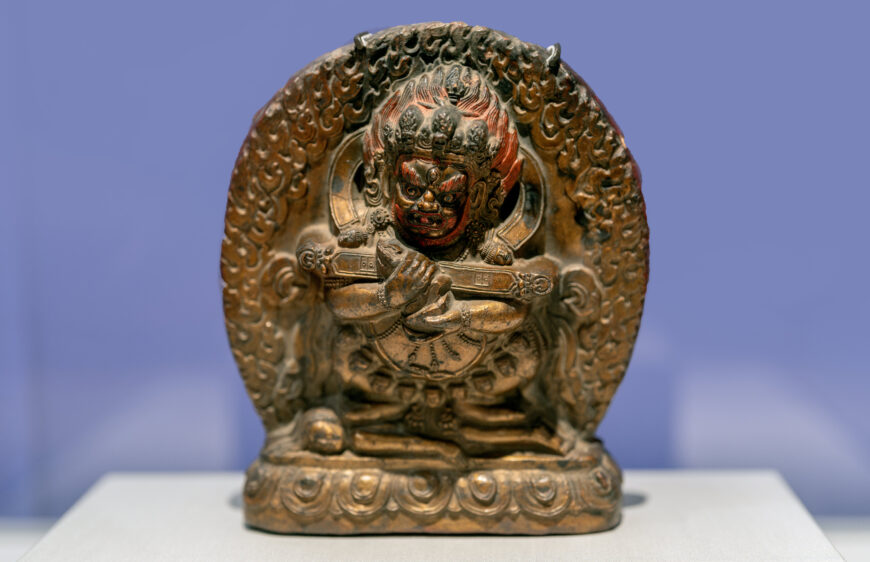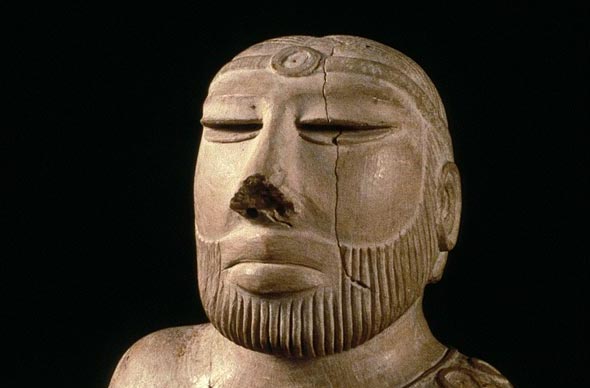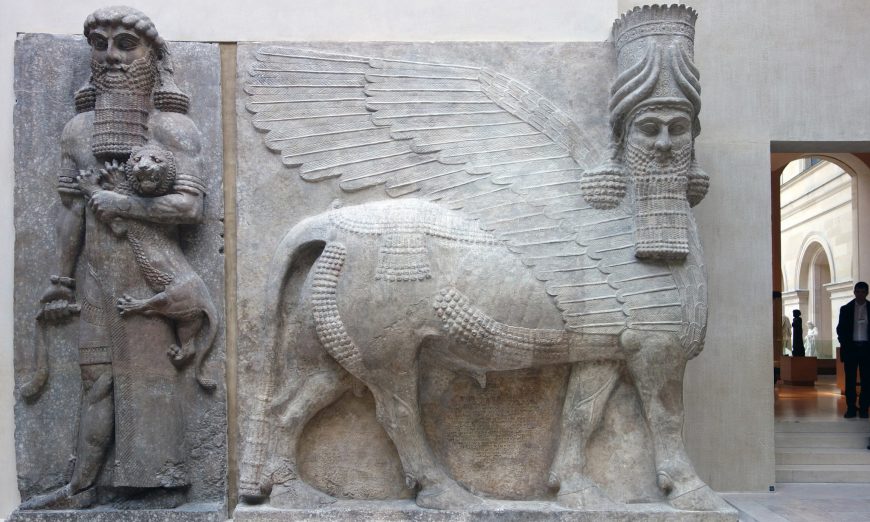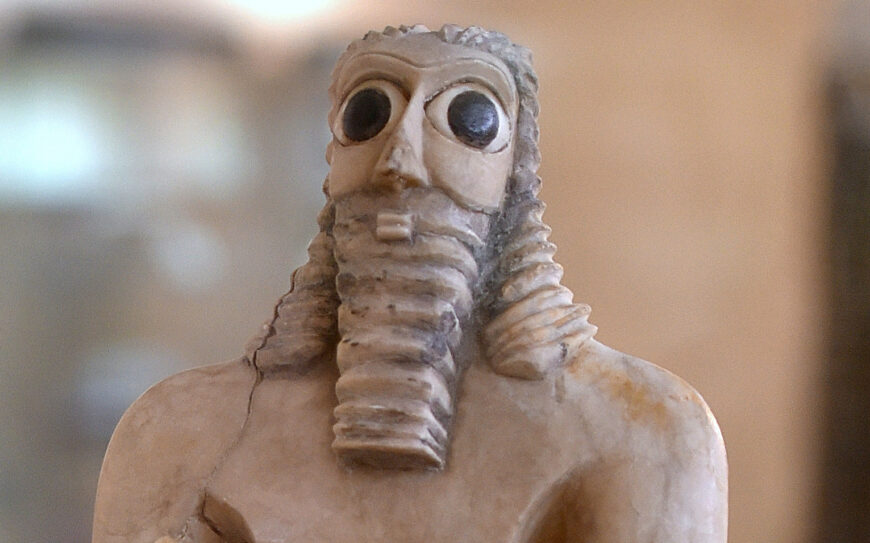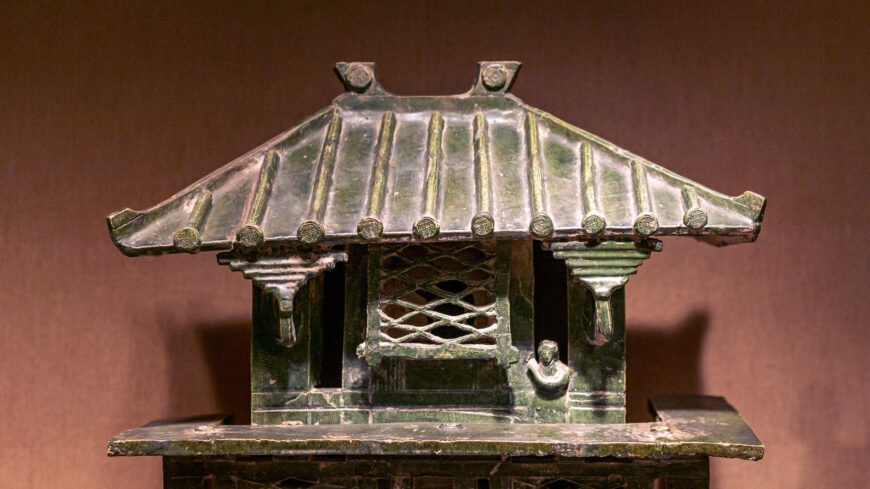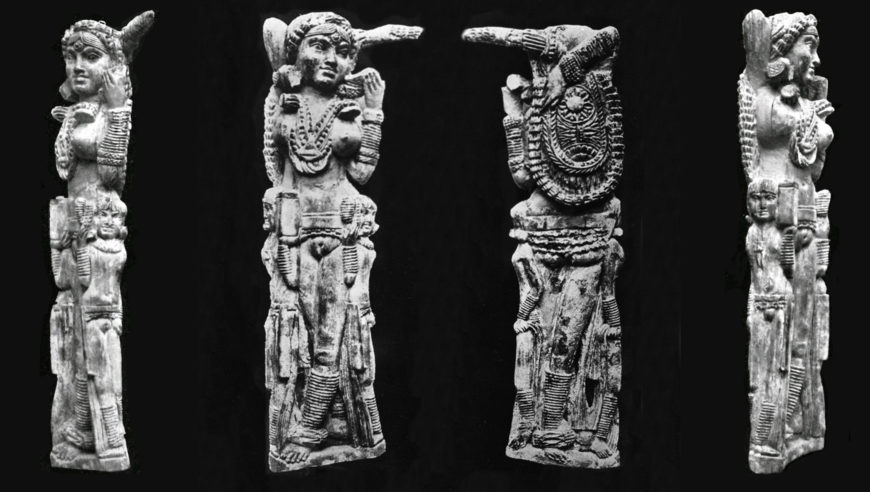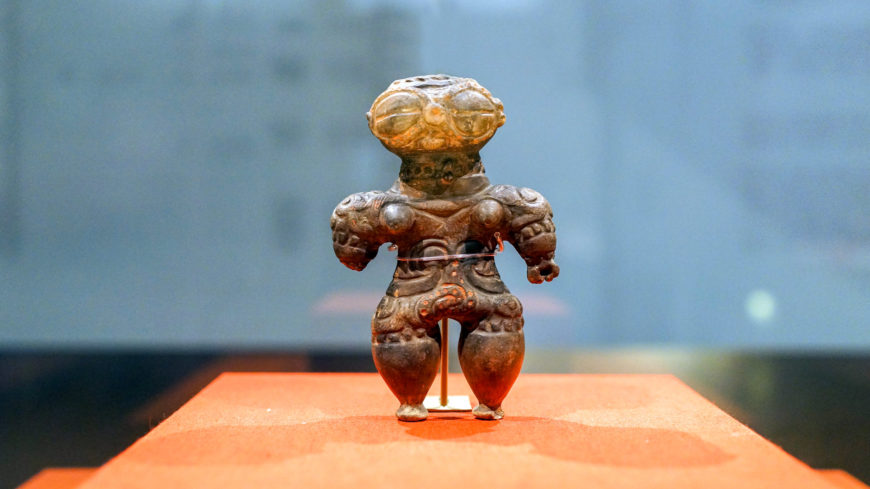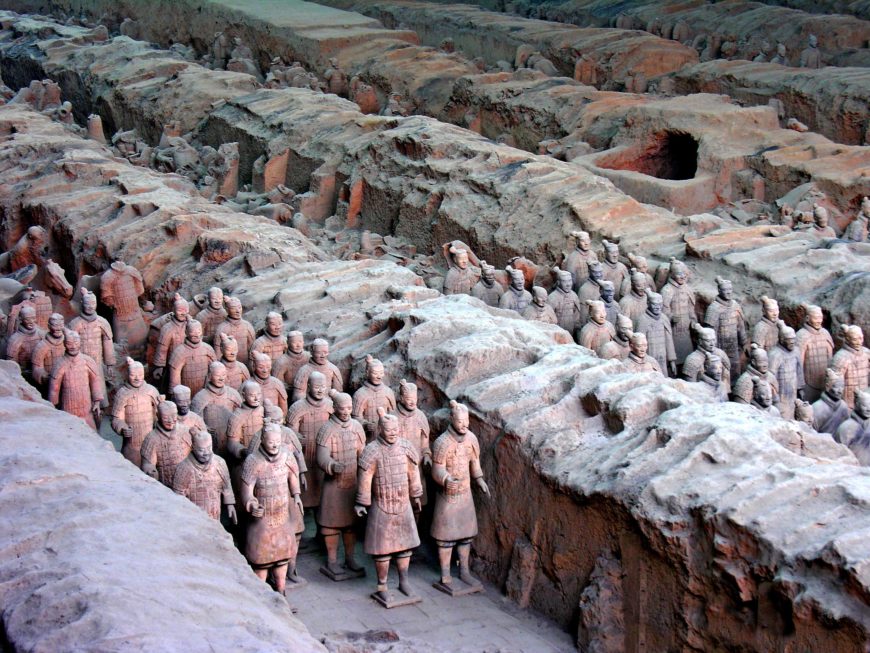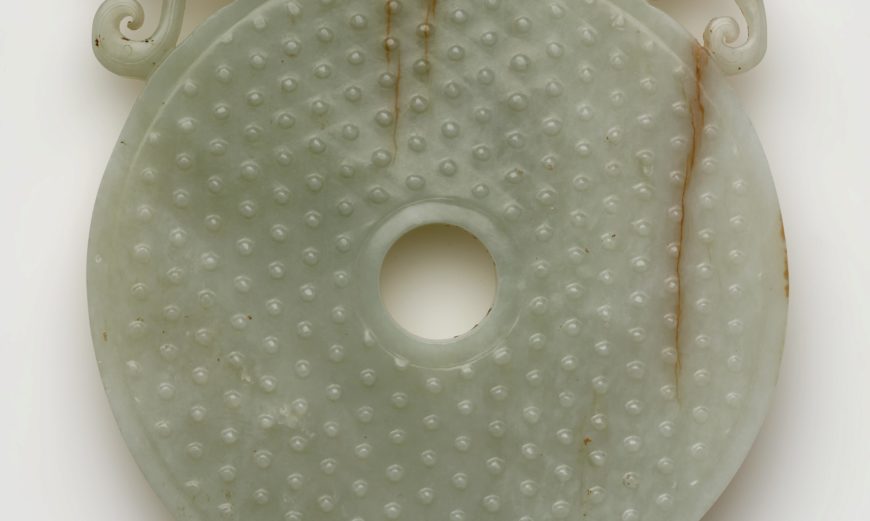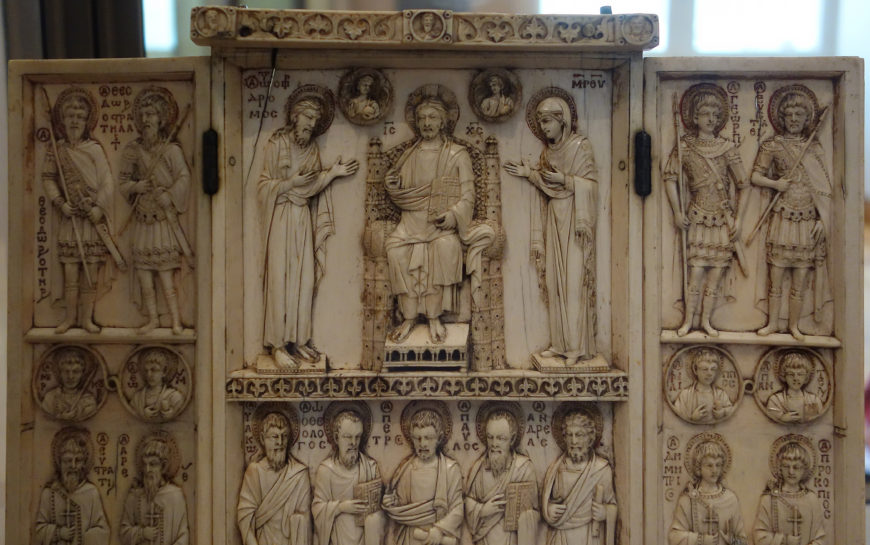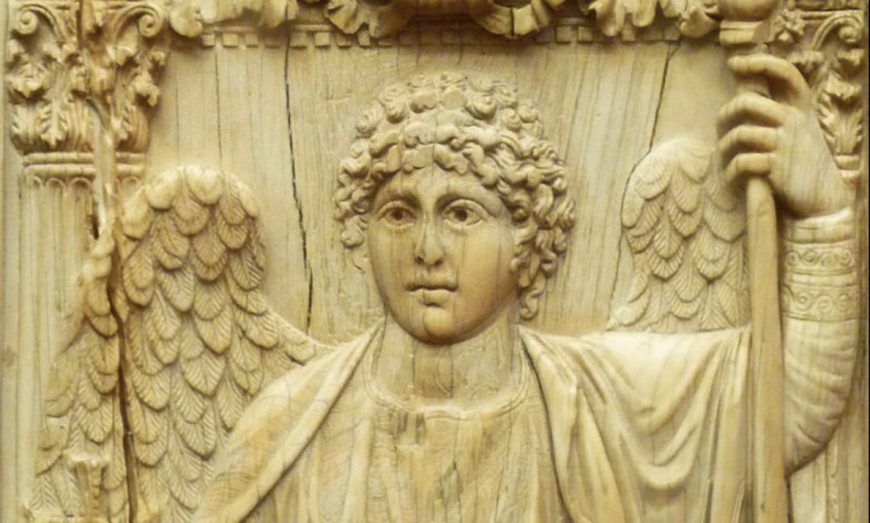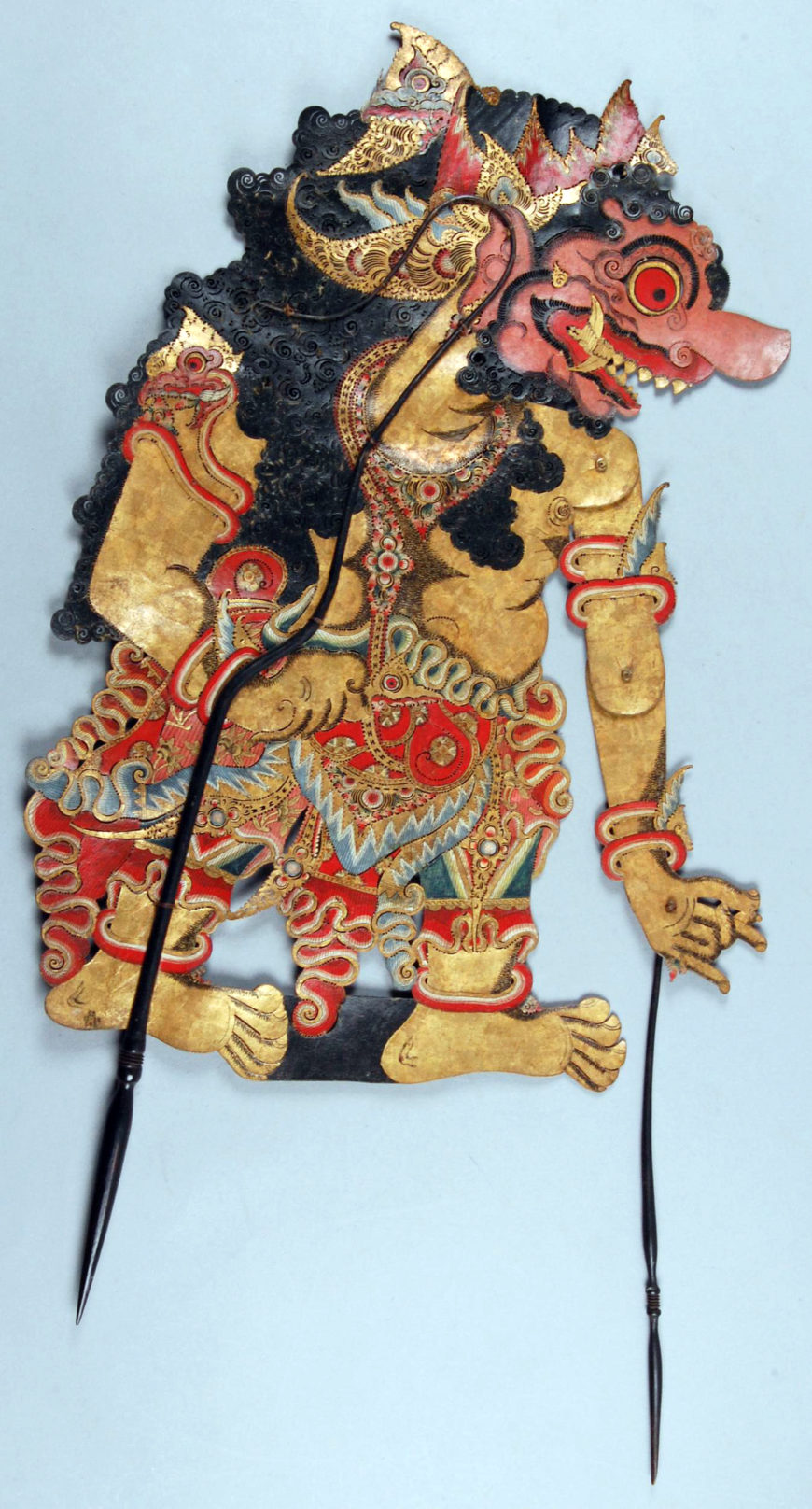
Shadow puppet, Kartasura style, c. 1800–1816, hide, horn and gold leaf, from Java, Indonesia, 90.3 cm high (© Trustees of the British Museum)
The colors and designs of Javanese shadow puppets are all clues to help identify the character. Here, the reddish-pink color of Kumbakarna’s face is an indication of his ruthlessness, while the tusks in the corner of his mouth suggest that he is a giant or a monster.
However, he also has positive characteristics, such as his loyalty to his brother, which are brought out in the performance. Kumbakarna is the giant brother of Dasamuka, called Rahwana in the Indian version of the tale of the Ramayana. He is Rama’s enemy: having captured Rama’s wife, Sita, Dasamuka faces the onslaught of Rama aided by Hanuman and his army. Although Kumbakarna advises him to free Sita, Dasamuka refuses and the two brothers die in the battle against Rama and his allies.
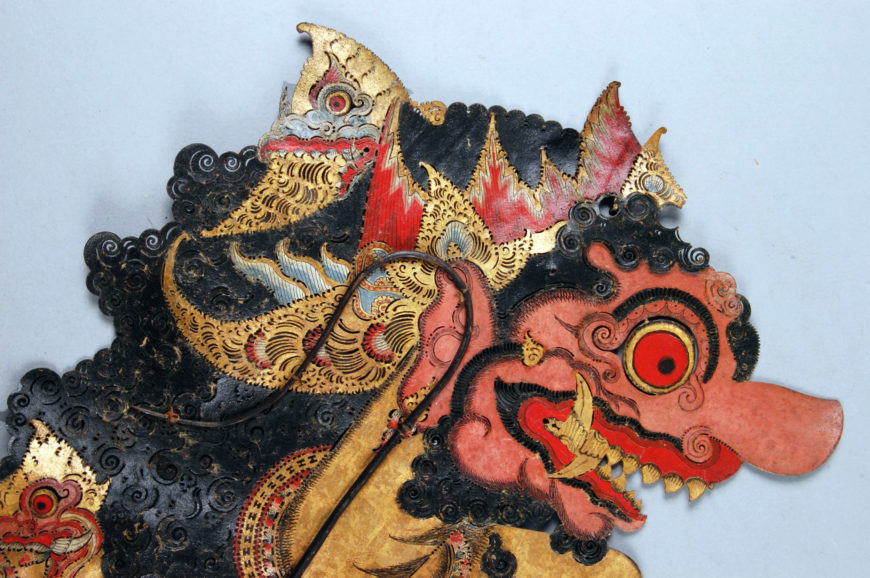
Shadow puppet, Kartasura style, c. 1800–1816, hide, horn and gold leaf, from Java, Indonesia, 90.3 cm high (© Trustees of the British Museum)
The earliest references to shadow puppets in Java are by court poets in the eleventh century. Performances today are very popular and stories are drawn partly from Javanese sources and partly from Indian epics (the Mahabharata and Ramayana).
It is a form of entertainment most often sponsored to celebrate a particular event, such as marriage, or as part of ceremonies. The puppeteer is not simply a performer, but also a ritual specialist because of the beneficial influence that the performance of shadow plays is believed to have on the well-being of the community.
© Trustees of the British Museum


